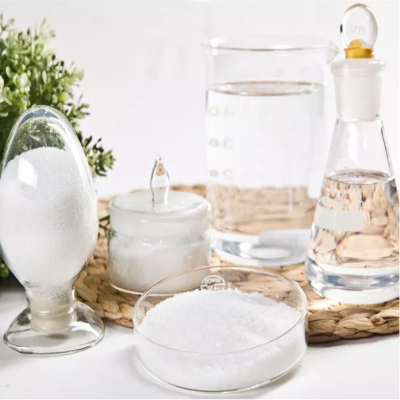-
Categories
-
Pharmaceutical Intermediates
-
Active Pharmaceutical Ingredients
-
Food Additives
- Industrial Coatings
- Agrochemicals
- Dyes and Pigments
- Surfactant
- Flavors and Fragrances
- Chemical Reagents
- Catalyst and Auxiliary
- Natural Products
- Inorganic Chemistry
-
Organic Chemistry
-
Biochemical Engineering
- Analytical Chemistry
- Cosmetic Ingredient
-
Pharmaceutical Intermediates
Promotion
ECHEMI Mall
Wholesale
Weekly Price
Exhibition
News
-
Trade Service
1 billion
.
The import volume in June exceeded 34,000 tons, a year-on-year increase of 10%, and the import value reached US$387 million, a year-on-year increase of 35%.
The unit price of imports was $11.
37/kg, a year-on-year increase of 24%
.
Chile still ranks first in export volume.
In the first half of the year, Chile exported 105,000 tons of salmon to the United States , with an export value of US$1.
4 billion; in June, the export volume reached 16,000 tons, with an average price of $12.
25/kg, a year-on-year increase of 38%
.
Canada ranked second, with an export volume of 45,800 tons in the first half of the year and an export value of 360 million US dollars; Norway ranked third with an export volume of 26,300 tons and an export value of 355 million US dollars; the UK and the Faroe Islands had a market share of about 3-4%
.
In the first half of the year, Chile exported 105,000 tons of salmon to the United States , with an export value of US$1.
4 billion; in June, the export volume reached 16,000 tons, with an average price of $12.
25/kg, a year-on-year increase of 38%
.
Canada ranked second, with an export volume of 45,800 tons in the first half of the year and an export value of 360 million US dollars; Norway ranked third with an export volume of 26,300 tons and an export value of 355 million US dollars; the UK and the Faroe Islands had a market share of about 3-4%
.
James Griffin, Director of the Chilean Salmon Market Association (CSMC) commented: "Since the second quarter of this year, American consumers have become more enthusiastic about buying Chilean salmon products.
The catering industry has recovered rapidly and prices have risen sharply, which has driven the rapid growth of Chilean salmon sales.
.
"
The catering industry has recovered rapidly and prices have risen sharply, which has driven the rapid growth of Chilean salmon sales.
.
"
"The U.
S.
epidemic has actually stimulated salmon consumption.
We have discovered some of the reasons behind it
.
On the one hand, consumers are more concerned about their own health, and home cooking has become the norm
.
Salmon is rich in vitamin D and antioxidant unsaturated fatty acids.
Consumers I began to incline to believe these scientific data.
This year's market demand and sales have resonated, and this trend is still continuing
.
" Griffin said that the salmon market is like an inflated balloon, with prices rising exponentially
.
S.
epidemic has actually stimulated salmon consumption.
We have discovered some of the reasons behind it
.
On the one hand, consumers are more concerned about their own health, and home cooking has become the norm
.
Salmon is rich in vitamin D and antioxidant unsaturated fatty acids.
Consumers I began to incline to believe these scientific data.
This year's market demand and sales have resonated, and this trend is still continuing
.
" Griffin said that the salmon market is like an inflated balloon, with prices rising exponentially
.
According to the statistics of the National Fisheries Association (NFI), between 2005 and 2020, the per capita consumption of salmon in the U.
S.
increased from 1.
67 kg to 2.
41 kg.
Consumption types include farmed and wild salmon
.
S.
increased from 1.
67 kg to 2.
41 kg.
Consumption types include farmed and wild salmon
.
In the US market, 47% of imported salmon products are chilled fish fillets, about one-third are chilled whole fish, and about 18 are frozen whole fish
.
.
Chilled fish fillets are mainly provided by Chilean suppliers, the ratio is about 69%, the chilled whole salmon is supplied by Canada, the proportion is 93%, and the frozen fish fillets are mostly from Norway, the proportion is 39%
.
The price of chilled fish fillets was the highest, with an average price of $11.
92/kg in the first half of the year, followed by frozen fish fillets with an average price of $11.
53/kg, while the price of whole fish was low at $7.
75/kg
.
.
The price of chilled fish fillets was the highest, with an average price of $11.
92/kg in the first half of the year, followed by frozen fish fillets with an average price of $11.
53/kg, while the price of whole fish was low at $7.
75/kg
.
According to Griffin, the average meat yield of whole fish is 54%.
Generally speaking, when calculating the price difference between whole fish and fish fillets, the price of the whole fish is usually multiplied by 1.
54 to get the corresponding fish fillet price
.
Canadian whole fish are usually transported by truck to the United States and processed in the United States
.
Some Chilean suppliers are also increasing exports of whole fish.
Since 2017, whole fish sales have quadrupled
.
Generally speaking, when calculating the price difference between whole fish and fish fillets, the price of the whole fish is usually multiplied by 1.
54 to get the corresponding fish fillet price
.
Canadian whole fish are usually transported by truck to the United States and processed in the United States
.
Some Chilean suppliers are also increasing exports of whole fish.
Since 2017, whole fish sales have quadrupled
.
Recently, the price of salmon in the United States has fallen.
The industry generally believes that the third quarter is not a peak season for consumption in Europe and the United States.
However, production in Norway is increasing, and global prices are under downward pressure
.
The industry generally believes that the third quarter is not a peak season for consumption in Europe and the United States.
However, production in Norway is increasing, and global prices are under downward pressure
.
Hanus Jacobsen, general manager of the US subsidiary of Faroese producer Bakkafrost, said: “Salmon spot prices change every week
.
If a producer wants to harvest fish early due to certain biological problems, it will inevitably have a negative impact on the entire market.
The shelf life of chilled salmon It is very short, and price compromises will be made on the sales side
.
If another supplier is not satisfied with the spot price and there is no pressure on the biomass, he will postpone the fish harvest slightly and the market will adjust upward
.
"
.
If a producer wants to harvest fish early due to certain biological problems, it will inevitably have a negative impact on the entire market.
The shelf life of chilled salmon It is very short, and price compromises will be made on the sales side
.
If another supplier is not satisfied with the spot price and there is no pressure on the biomass, he will postpone the fish harvest slightly and the market will adjust upward
.
"
“For salmon producers, every month can be the harvesting period.
This is no better than those of capture fisheries.
There are no seasonal restrictions
.
Chile is located in the southern hemisphere.
The winter months in the United States are the hottest seasons in Chile.
Norway, Scotland and France The Rock Islands are just the opposite, the summer months are the peak harvest season
.
" Jacobsen said
.
This is no better than those of capture fisheries.
There are no seasonal restrictions
.
Chile is located in the southern hemisphere.
The winter months in the United States are the hottest seasons in Chile.
Norway, Scotland and France The Rock Islands are just the opposite, the summer months are the peak harvest season
.
" Jacobsen said
.
Some Chilean suppliers sign 6-12 months forward contracts with importers, and prices are not affected by supply
.
.
Jacobsen believes that Chile's supply will fall into a shortage in the next few months, which is related to this year's red tide.
Even if it does not have a major impact on production in the second half of the year, prices can be maintained at a relatively high level
.
The Chilean Aquaculture Agency (Sernapesca) requires all areas where red tides occur to recuperate for 9-18 months, and the fry stocking plan must be changed
.
Even if it does not have a major impact on production in the second half of the year, prices can be maintained at a relatively high level
.
The Chilean Aquaculture Agency (Sernapesca) requires all areas where red tides occur to recuperate for 9-18 months, and the fry stocking plan must be changed
.
Jacobsen also said that the US market has different premiums for imported salmon quality.
Bakkafrost is currently Faro’s largest supplier.
The feed used is rich in marine raw materials, and the taste and texture of salmon are top-notch
.
Bakkafrost is currently Faro’s largest supplier.
The feed used is rich in marine raw materials, and the taste and texture of salmon are top-notch
.







